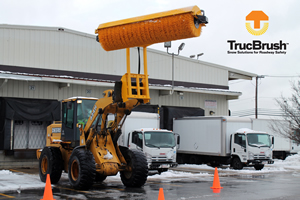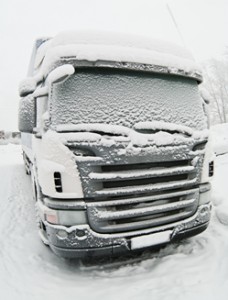Go to any trucking association event and it will quickly become evident that the truck driver shortage continues to be a hot topic for this industry. At the Illinois Trucking Association’s Annual Conference, which I attended last week, the challenge popped up several times regardless of session topic or speaker. Each presenter, from safety directors to the American Trucking Association’s chief economist, Bob Costello, weighed in on the driver shortage and what might be driving the issue, pun intended.
Scott Claffey, who spoke on Managing Organizational Risk, gave us food for thought when he warned attendees to ask themselves one question prior to spending money on advertising, recruiting and training new drivers: “Do you have a shortage of drivers because drivers continue to come and go?” In other words, what’s your organization’s culture and is it driving drivers away? “If the answer is yes, then you don’t have a driver shortage issue, you have a retention issue,” he said.
Whether your driver shortage is due to a retention issue or part of the global picture, I would have to believe that keeping existing drivers healthy, safe and content must be a top priority. It surprises me then that one of the major methods for addressing accumulated snow on the tops of trucks is still having drivers and other employees manually clearing it—an inherently dangerous task on a slippery surface in adverse conditions—or worse, ignoring the issue of accumulated snow entirely.
What is the true cost to your organization if a driver is hurt while performing this task? How difficult will it be to find a replacement for that experienced driver if they are injured and what will it cost the company to train that replacement? If the accumulated snow is disregarded and the truck is later detained by law enforcement because accumulated snow and icy debris on the roof of the trailer (an unsecured load) or worse it is the contributing factor to a highway accident, how will that impact your driver and the company? Might it have a catastrophic impact?
I need to give credit to Bob Claffey for coining the phrase, ‘operational interruption’ in his presentation last week in Illinois. Operational interruptions come in many forms but we can all agree that when there are circumstances that cause our trucks not to be on the road, it is an operational interruption. “Only when the truck is in motion are you truly generating revenue,” he said.
Each winter companies face a significant potential for operational interruption with the accumulation of snowy debris on fleet rooftops, especially given the number of states in the snowbelt establishing new legislation or relying on existing state laws to enforce the clearing of this wintry reality. The manual method of clearing snow—a slow and potentially hazardous process—decreases driver moral and impacts your company’s culture while having a negative impact on your fleet’s revenue generation due to operational interruption.
Implementing TrucBrush, however, adds efficiencies to your fleet preparedness, significantly reduces operational interruption and creates greater employee moral for drivers who no longer have to battle Mother Nature as far as clearing their truck’s rooftop prior to leaving the facility.
Soon the American Transportation Research Institute (ATRI) will release their list of the top issues facing the trucking industry. Word has it from Rebecca Brewster, President and Chief Operating Officer of ATRI we can expect some changes on the list from past years. Driver shortage is still likely to make the list given the economic projections of a 35,000 to a 200,000-driver shortage. It’s a complex issue and I believe will require a multi-pronged solution. Perhaps one step to solving the driver shortage will be an even higher focus on truck driver safety, health and wellbeing.
TrucBrush is a service solution that can address a significant winter safety issue for your drivers. Not to mention help keep other motorist on North America’s roadways free from ice missiles and whiteouts caused by accumulated snow falling off truck rooftops. Whether your maintenance team operates TrucBrush, your existing snow contractor or a TrucBrush Preferred Vendor, TrucBrush offers companies a mobile, fast and effective method to clear snow. It removes the need for anyone to be on top of a slippery snowy truck or trailer rooftop, increases employee moral and improves your organization’s overall culture by allowing truck drivers to focus on what she or he was hired to do, move freight safely and effectively for you and your customers. This in turn means keeping employees at your company in a time when no one can afford to lose a good driver.




